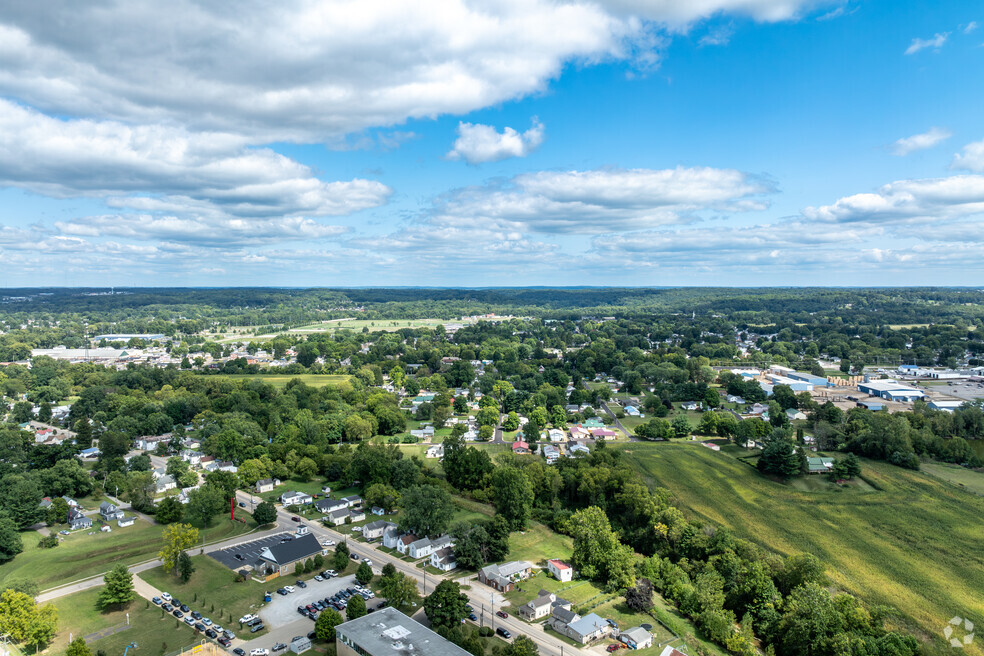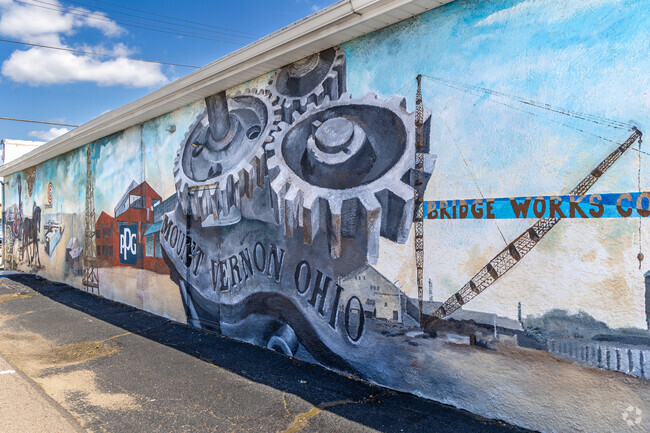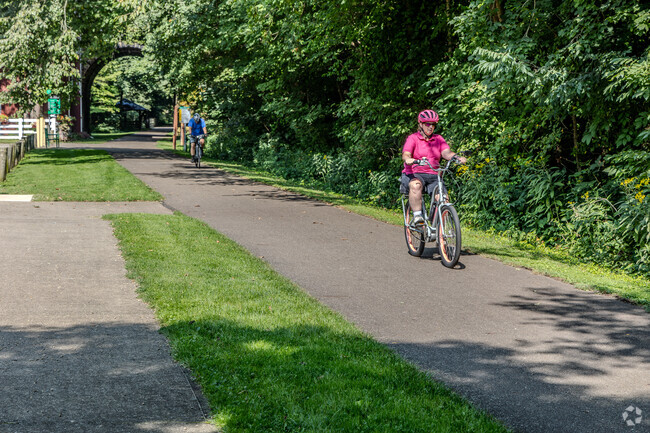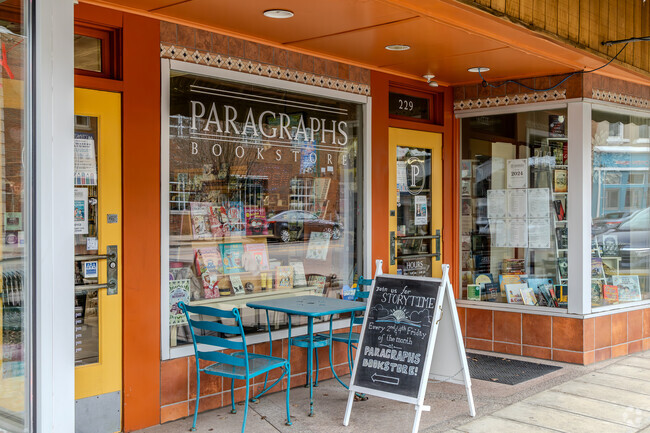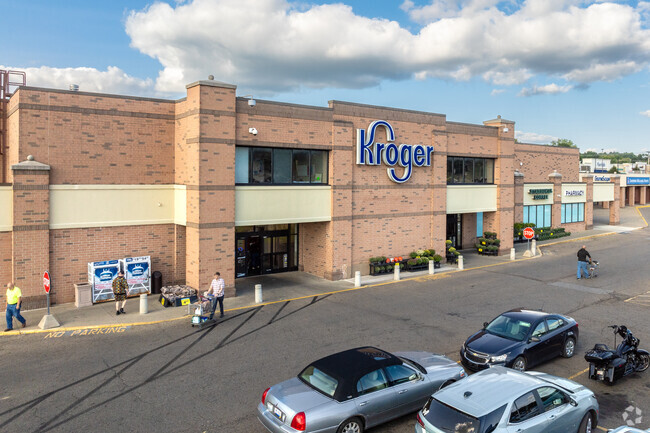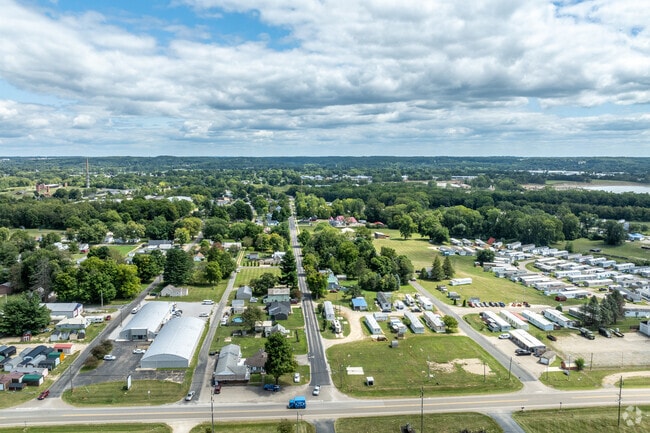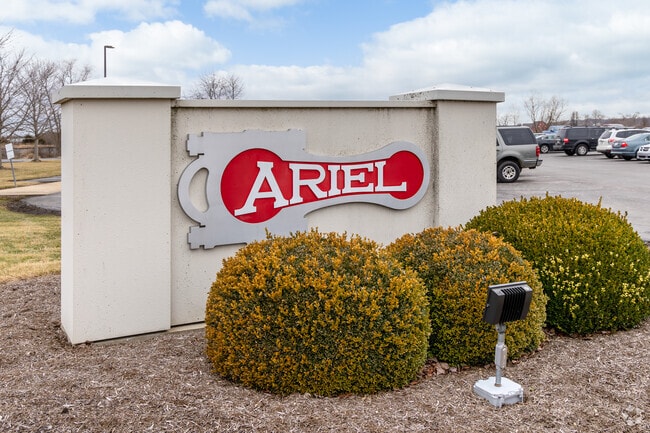A blue-collar neighborhood in a tight-knit town
People tend to buy homes in South Mount Vernon because they grew up in the area and want to continue living in a tight-knit community where family and lifelong friends are always just down the street. "A lot of people buy their parents' houses, as a matter of fact," says Realtor Aubrey Snow, who sells homes in the city with Sluss Realty. "It's a safe place to raise a family, and you always run into someone you know." Beyond its early 20th-century homes (which often sell for less than $200,000), the neighborhood's most apparent benefits are its access to restaurants, outdoor amenities and low cost of living compared to the big city. "People move to Mount Vernon because it is an affordable place to live just an hour outside of Columbus," says Matt Starr, who has served as Mount Vernon's mayor since 2020. Most residents walk less than a mile to two of the city's most popular public green spaces, including the 250-acre Ariel-Foundation Park, the site of a glass factory that supported the city's economy from 1951 until its closing in the 1970s. As for the current industry, many South Mount Vernon residents work at the multiple car, tractor and motorcycle dealerships on the neighborhood's west end along Harcourt Road.
Fast food and fine dining
South Mount Vernon offers a host of casual American cuisine options, while the downtown, immediately to the north, has finer dining establishments. Just off Harcourt Road, Road Hog Willy's Real Pit Bar-B-Q serves smoked meats with its signature homemade sauce in a rural chic atmosphere. On the neighborhood's northeast corner, blocks of houses surround Dutch's Bar & Grill, a dive bar where local bands riff on electric guitars and cold beer flows. Residents on the northeast corner walk less than a mile to a strip of dining options along Newark Road, which is lined with sidewalks. Most of the options are fast food franchises, but there are also local favorites like Southside Diner, a 1950s-style eatery that's been a Mount Vernon staple for over 30 years. The interior is decorated with retro-style gas station signs, rock memorabilia and neon lights. "My favorite thing on the menu is the blue-plate special, a diner tradition that we're trying to keep alive," says General Manager Franklin Winter, who has worked at the diner for six years. "In the 1950s and 60s, the blue-plate special was one of the most affordable plates. It's composed of things on the menu that the diner wants to sell faster." For over 20 years, residents have browsed in the open air at Miller's Farm Market for locally grown produce and baked goods. But most people buy the bulk of their groceries at Baker's IGA, less than a mile down the street from the market. Downtown Mount Vernon is half a mile north of the grocery store and includes fine dining options like The Alcove Restaurant & Lounge, a regal environment adorned with crystal chandeliers, pastoral artwork and blue velvet booths. For over 110 years, the restaurant has served gourmet dishes like duck breast, filet mignon and smoked salmon. For craft beer lovers, the restaurant has a tap room across the hall. The downtown's assortment of two-to-three-story brick buildings includes several local shops. Paragraphs Bookstore has sold an assortment of literary, genre and historical novels, as well as nonfiction books, for over 28 years. On snowy days, the warmly lit glass storefront draws readers into a quiet space where they can browse through thousands of texts and sink into soft furniture. "The employees here curate all the books you see on the shelves," says Maxwell Leaning, manager at Paragraphs Bookstore. "We host author events, and we even partner with Kenyon College to bring in authors from the famous Kenyon Review to put on writing workshops for elementary, middle and high schoolers."
A park erected from the city's industrial ruins
Mount Vernon's largest and most popular green space is the Ariel-Foundation Park, which is directly north of the neighborhood's residential blocks. People walk to the park to take strolls, relax on benches, feed the geese, drop fishing lines and paddle the ponds. The park is essential to the community because it showcases Mount Vernon's resilience in the face of deindustrialization. The 250-acre green space offers winding trails that traverse stands of trees, fields and marshes along Kokosing River. Mavis Island is in the center of the park and can be accessed via strips of land that cradle seven ponds. But the park's primary attraction is its scenic terraced hills overlooking the well-maintained ruins of the old Pittsburgh Plate Glass Factory. Among these ruins are sculptures of twisted steel and blue rivers of glass chunks. The Rastin Observation Tower is one of the park's most prominent features. Park visitors climb the spiral staircase coils up this industrial smokestack to get a panoramic view of Knox County. While the Ariel-Foundation Park is a favorite among nature and history lovers, Lamb Park is a hit among South Mount Vernon's more athletic residents. The neighborhood's residential blocks line Lamb Park, a 5.1-acre green space that the New Life Church of the Nazarene is currently renovating. Local Little League teams play games at the park's baseball field, and locals also use its soccer fields and basketball court. Mount Vernon children have played on the sandlot since the 1950s, but for the past two decades, the baseball field has been in a severe state of disrepair. That all changed when church volunteers began restoring the baseball field in 2024. While their older siblings play sports, younger children can have fun on the playground, which has multiple playsets and swings. Parents can walk or jog through the park's wooded trails. But for those who desire a longer trek, the Heart of Ohio Trail starts downtown, crosses a bridge over the Kokosing River, passes through Ariel-Foundation Park, then runs along the residential blocks lining Neil Avenue and continues all the way to the Knox-Delaware County line. Cyclists park their cars at 501 Main Street and peddle for dozens of miles past farms, along rivers and through forests. The trail connects to the currently expanding Great American Rail Trail, which will run close to 3,700 miles and connect the coasts.
A city invested in its housing
Just east of Harcourt Road, there are tree-shaded residential blocks. Most front yards have gravel driveways, and the streets are hemmed with power lines. The properties offer a mix of attached and unattached garages. The early 20th-century and mid-century houses draw blue-collar homebuyers. A train track runs through the neighborhood's eastern portion, which creates some noise. Homebuyers can purchase single-bedroom 1950s shotgun cottages for as low as $80,000, and two-bedroom 1930s bungalows sell for as high as $120,000. Ranch-style houses from the 1990s and early 2000s sell for between $180,000 and $220,000. Two-story homes built in the 1910s sell for as low as $110,000, and newly built Modern Farmhouse-style homes sell for as high as $240,000. "There are minimal homes and tons of homebuyers," Snow says. The city is currently trying to build more housing. "Liberty Crossing on the south side will be within walking distance of the city's industrial park and will have 470 units of single-family homes, town homes and apartments," Starr says. "They will attract Intel workers, and 50% of the land will be green space." The neighborhood housing development will be south of the neighborhood along Newark Road, and the mayor says a comprehensive site plan will be ready by the fall of 2024. Intel is investing $28 billion to build two semiconductor plants at the New Albany International Business Park, about 32 miles southwest of Mount Vernon. The city hopes to attract these workers.
Public schools and private colleges
Children often walk to the B Niche-rated Columbia Elementary School, which is within the neighborhood along Columbus Road. Students either take buses or their parents drive them to Mount Vernon Middle School, about 2 miles to the neighborhood's southeast. The school has a B-minus rating. Next door, Mount Vernon High School has a C-plus Niche rating. Students at the high school earn college credits by taking Advanced Placement classes. "The schools were pretty good, and they made Mount Vernon a nice place to grow up," says Steve Schisler, a lifelong resident who graduated from Mount Vernon High School in 2021. Over 1,900 students attend Mount Vernon Nazarene University, a private Christian school. The campus, established in 1968, is 1-½ miles southeast of the neighborhood. Kenyon College is 6-½ miles east of the neighborhood. The private liberal arts college is based in the neighboring village of Gambier and has over 1,800 undergraduate students. The school, established in 1824, is home of The Kenyon Review, which has published authors like Flannery O'Connor, Thomas Pynchon and Maya Angelou.
Shows at the opera house and evenings at the dragstrip
Within the community, entertainment and activities for adults and children may not seem readily apparent, but there are plenty of options for those who take a closer look. In the summer, Mount Vernon's downtown hosts its monthly First Friday series, where businesses stay open later, and locals are encouraged to wear themed costumes and enjoy food, drink and music. "In Mount Vernon, we don't need much of an excuse to shut down the streets and have a party," Starr says. The aforementioned Alcove Restaurant & Lounge is in the same building as the Woodward Opera House, featured in the National Register for Historic Places and has featured concerts and plays since 1851. Also downtown, the YMCA of Mount Vernon hosts summer camps and year-round sports programs. "Our kids love for us to take them to the YMCA swimming pool," says Jay Beaver, a lifelong Mount Vernon resident. "There's always other kids their age for them to play with." Parents enroll their kids in ballet lessons at South Mount Vernon's Bradford Performing Arts Center, just off Harcourt Road. Also on Harcourt Road, the Knox County Historical Society has a collection of old steam engines among its exhibits that showcase the community's industrial past. Pacemakers Dragway Park is 1-½ miles south of the neighborhood via U.S. Route 36. Professional and semi-professional drag racers have burned rubber on the 1⁄8-mile National Hot Rod Association-approved track since 1956. On gamedays, college football fans take Ohio State Route 229 and Interstate 71 about 50 miles southwest to tailgate and root for the Ohio State Buckeyes at Ohio Stadium.
Getting to Columbus and beyond
Many of the neighborhood's streets are lined with sidewalks that locals use to walk pets and take evening strolls. Residents do not have access to public transportation, so they often walk along the Heart of Ohio Trail to reach downtown. Commuters take Ohio State Route 229 and Interstate 71 about 53 miles southwest to reach Downtown Columbus. When folks need to take more extensive trips, they take U.S. Route 36 about 42 miles southwest to John Glenn Columbus International Airport.

